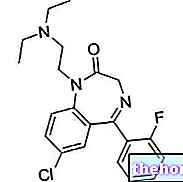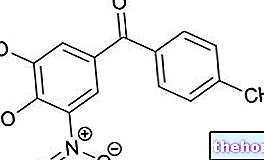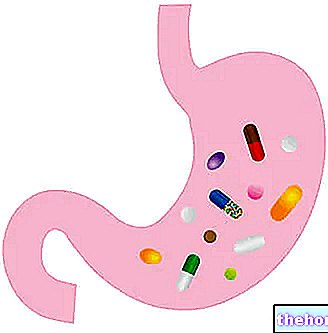Definition
Tuberculosis is an infectious and contagious pathology caused by a bacillus, responsible above all for lung damage; however, the disease can affect lymph nodes, meninges, urogenital system and skeleton. Reinfection with tuberculosis is possible after a few years, caused in most cases by previous outbreaks.
Causes
Tuberculosis is caused by the bacillus Mycobacterium tuberculosis, transmitted via infected micro-droplets of saliva. It is good to remember that the immune system is often able to eradicate the infection as soon as the bacillus comes into contact with the organism.
Symptoms
Cough is certainly the symptom that characterizes tuberculosis: cough that lasts up to three weeks, accompanied by the emission of blood. In turn, the cough is responsible for an annoying pain in the chest. The secondary symptoms vary according to the site of the disease. "infection and often associated with weight loss, fever and sweating. The manifestation of asthenia, chills, swollen lymph nodes and splenomegaly are also possible.
Information on Tuberculosis - Drugs for the Treatment of Tuberculosis is not intended to replace the direct relationship between health professional and patient. Always consult your doctor and / or specialist before taking Tuberculosis - Drugs to Treat Tuberculosis.
Medicines
Pharmacological treatment of tuberculosis is quite complex; to make it easier to understand, a simplifying scheme is shown below, divided into two phases.
- Initial phase: administration of 4 targeted and precise drugs (pharmacological combinations), useful both to reduce the bacterial load in a timely manner and to prevent the formation of resistant parasites. Pharmacological treatment must be carried out as soon as possible after the onset of the first symptoms, clearly after a diagnostic assessment. The duration of therapy in this first phase is around 2 months.
- Maintenance phase: use of 2 drugs to which the bacilli must be completely sensitive. The disease is more complicated therapeutically when the bacillus infests extra-pulmonary areas. The treatment should be continued for 4-6 months; in case of tuberculosis involving the meninges, it is recommended to continue the treatment for a longer period.
A preventive chemoprophylaxis treatment is essential to avoid the worsening of tuberculosis from the latent phase to the dreaded active phase: in this sense, isoniazid TB is particularly indicated, especially in AIDS patients and infants. The treatment should be continued for 9 months. Chemoprophylaxis therapy should be performed in patients with previous untreated tuberculosis, especially when immunocompromised.
Drugs used in the first phase of tuberculosis: drug treatment requires medical supervision, especially for those patients with obvious difficulties in dealing with the therapy. The drugs listed below should be administered 3 times a week for 2 months. There are also drug combinations already dosed: consult your doctor.
- Ethambutol (eg. Etambu, Etapiam) the recommended dose is 30 mg / kg, three times a week. The drug can also be omitted if the risk of drug resistance is low. Alternatively, take streptomycin (eg Strept S FN). Do not take streptomycin when pregnant.
- Isoniazid (eg Isoniazi FN, Rifater, Rimcure) take 15 mg / kg for adults and children, three times a week. Do not administer more than 900 mg of the drug.
- Rifampicin (eg Rifampic) is recommended to take 10 mg / kg of drug per day orally or intravenously. Alternatively, take 15 mg / kg of the drug three times a week. Do not exceed 600 mg.
- Pyrazinamide (eg. Pyraldine) if the patient weighs less than 50 kg, administer 2 grams of the drug three times a week. If the weight exceeds 50 kg, it is recommended to take the drug at a dosage of 2.5 g three times a week.
Drugs used in the second stage of tuberculosis:
Isoniazid and Rifampicin must be taken for 4-6 months, three times a week, in full compliance with what is prescribed by the doctor.
The posology described above is an example: the doctor can modify the dosage according to the patient's response to treatment. In any case, should a therapeutic process begin, it is advisable not to interrupt it until the end of the therapy, not even in the case of improvement / remission of symptoms.
In tuberculosis involving meninges or pericardium, it is necessary to initiate therapy with a corticosteroid (eg dexamethasone: Decadron, Soldesam) in combination with anti-tuberculous treatment.
Vaccination
Vaccination for tuberculosis prophylaxis (BCG vaccines, Calmette-Guérin bacillus) is useful to promote a certain sensitivity towards the tubercle bacillus Mycobacterium tuberculosis. Vaccination is a preventive measure against tuberculosis, the indication of which is limited to particular situations. Consult your doctor.
Other articles on "Tuberculosis - Drugs for the Treatment of Tuberculosis"
- Tuberculosis: treatment and vaccine
- tuberculosis
- Tuberculosis, symptoms, causes and contagion
- Inactive tuberculosis and active tuberculosis
- Tuberculosis: Diagnosis




























